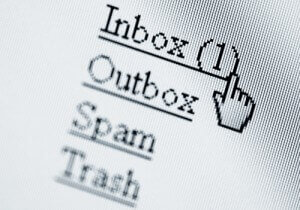- Products

Enjoy a free 30-day trial of our
data validation software.Experience the power of trusted data
solutions today, no credit card required! - Solutions

Enjoy a free 30-day trial of our
data validation software.Experience the power of trusted data
solutions today, no credit card required! - Partners

Enjoy a free 30-day trial of our
data validation software.Experience the power of trusted data
solutions today, no credit card required! - Learn more
- Pricing
- Contact Us
How to improve email data quality

"Virtually everything in business today is an undifferentiated commodity, except how a company manages its information. How you manage information determines whether you win or lose."Bill Gates
The lifeblood of email marketing is the quality of email address data; virtually every email campaign metric can be traced back to it. The better the quality of the data, the more likely marketers are to experience higher email open and click through rates, more conversions, and often times, a higher ROI from the expenditure. On the flip side, poor data quality can mean bad things for demand generation.
Although marketing executives all over the world lament the quality of their databases, all recognize that great data quality does not just happen. In fact, according to a recent Experian Data Quality study, on average, organizations believe a quarter of their database is inaccurate.
The financial impact of poor data can be quantified as well. Gartner estimates that businesses waste $8 million on average per year as a direct result of poor data. “The longer incorrect records remain in a database, the greater the financial impact,” says Jonathan Block, SiriusDecisions Senior Director of Research. “This point is illustrated by the 1-10-100 rule: It takes $1 to verify a record as it’s entered, $10 to cleanse and de-dupe it, and $100 if nothing is done, as the ramifications of the mistakes are felt over and over again.”
Fortunately, there are three simple steps you can take to proactively improve the quality of your data:
1. Structure your data collection methodology
According to Leslie Ament, Managing Partner of Hypatia Research, “Many larger retailers have upwards of 10 different databases with different schema for collecting customer data.” With so much information stored across the business, standardizing and normalizing this information can be highly challenging.
Small steps can be undertaken, however, to improve your database quality. Start by examining and identifying every point where additional information about a customer is added to their file. From there, carefully look at your organization’s customer flow.
2. Validate essential information
Information is coming in through a host of different channels, and oftentimes it is entered in manually. It is easy for human error to take over and create inaccuracies in the information, which cannot be corrected until after the customer engagement is over. Therefore, validate the information that is essential for you to stay connected with that consumer, such as contact information. By validating these details, companies can be certain that materials reach the consumer and communication lines stay open. This is especially important when considering the customer’s email address, which is used frequently to link customer information across channels and for marketing communications.
3. Keep it clean
Email addresses change frequently. If you are not checking your database regularly, you may be marketing to only a fraction of your subscribers.
To ensure you reach your email subscribers, try using an email validation service to validate your email addresses. If you have a database that already exists with a large number of inactive users, you should cleanse your database to validate email addresses are active. Once you have validated your existing database, add functionality to your web forms to validate email addresses in real time. This will help ensure your data is of consistently high quality and your messages will reach their intended target time after time.

